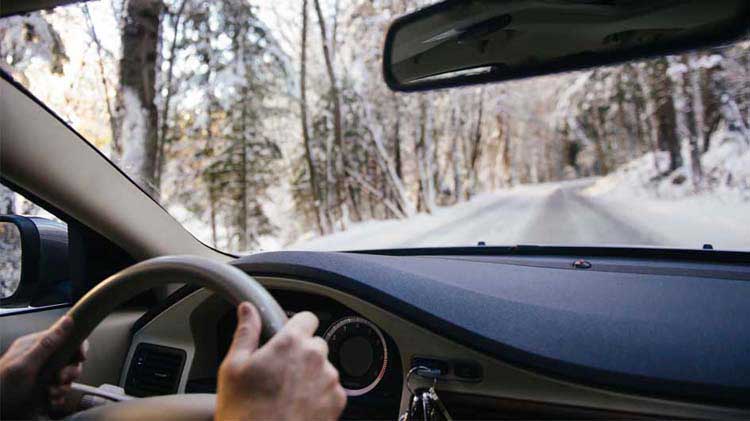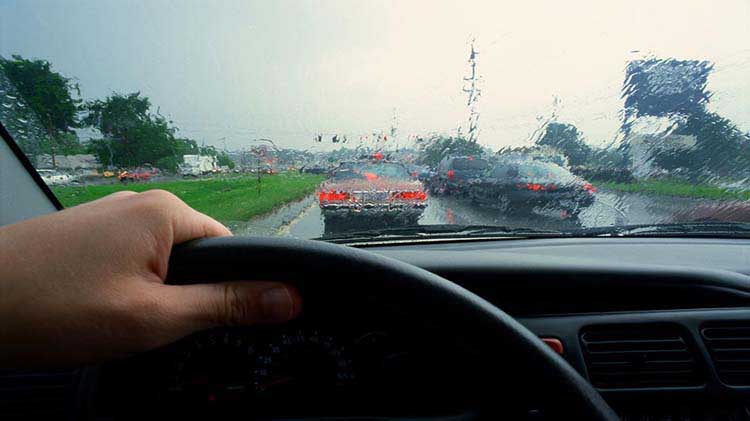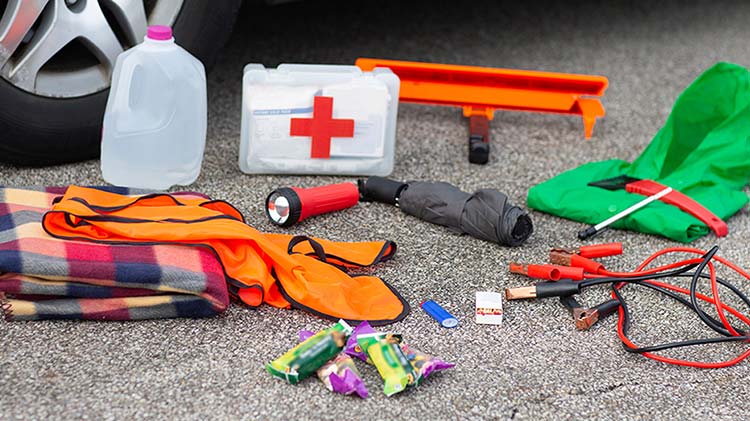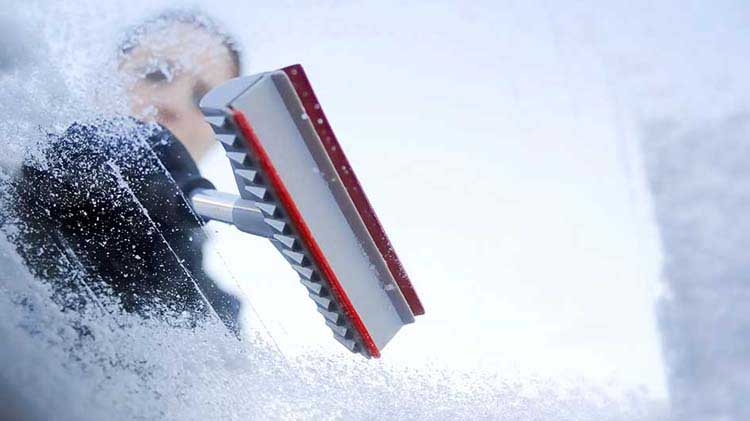Basic winter driving tips
Learn how to navigate snow, heavy fog, ice and more.
Even if you don't experience winter storms often, it's still important to know how to drive in any season's conditions. How should you handle it when your drive time intersects with winter weather? You should first prepare your car for winter and then learn from these scenarios.
The safest option is to avoid driving during inclement weather if you are able to do so.
Heavy rain
If you're in a rainstorm, avoid slamming on the brakes or abruptly correcting your steering. If your vehicle begins hydroplaning, ease off the gas pedal and steer straight until you regain control.
Dense fog
Heavy fog makes it harder for you to see your surroundings and for others to see you. If you find yourself in heavy fog, here are some steps to keep you safe.
- Use your fog lights if your vehicle has them. Fog lights help illuminate the road and make you more visible to other drivers. Some vehicles have rear fog lights, which help those behind you see your vehicle from farther away.
- Keep headlights on low beam (high-beams just reflect off the fog and don't illuminate the road ahead).
- Hug the right edge of the road.
- If you need to pull over, move far away from traffic and turn off your lights: Other drivers might see taillights and think you're in the traffic lane, which can lead to them going off the road.
Icy conditions
When the roads are icy you need to avoid making sharp turns or corrections, and avoid slamming on the brakes, which could cause skidding. When approaching a hill, wait until the vehicle in front of you has reached the top before you start up. Drive steadily up the hill but avoid going too fast; that could cause you to swerve.
Snowy weather or on snow-covered roads
When the streets have snow on them, you won't be able to stop or maneuver as quickly. When you see snow on the roads here are some steps to take.
- Don't pass snowplows or sanding trucks — they are likely trying to clear the road ahead.
- Approach intersections slowly, and brake gently to avoid skidding. If you slide, turn your steering wheel in the direction your vehicle is sliding.
- Avoid using cruise control.
- Drive slower than usual, and double the usual distance between your vehicle and the one in front of you to about eight seconds and decrease your speed by five to 10 miles per hour.
- Avoid the impulse to firmly push the brake pedal. Instead, ease off the accelerator, slowly tap the brakes to slow momentum and eventually come to a complete stop.
Black ice
When snow melts during a warm winter day but freezes again overnight, something termed black ice can form. It's not actually black — just a very thin, shiny-looking sheet of ice that's often difficult to detect. When you think there may be black ice, you should, if possible, delay driving until temperatures warm. Otherwise, drive at slower-than-posted speeds and increase your following distance.
Gusty winds
As cold fronts move in, winds often pick up speed. High winds or strong gusts can affect how your vehicle handles, even if you're driving at normal speeds. Especially after a snowfall, blustery conditions can result in fallen branches, poor visibility and downed power lines. In gusty conditions, you should slow down so it's easier to brake and handle your car. In addition, choose parking spots away from potential hazards.
Nearby drivers losing control
If you observe nearby drivers losing control of their vehicles, there is a good chance you could, too. Two actions will help. First, slow down and put as much distance as possible between your vehicle and other vehicles, in case you spin out or someone else loses control. If your vehicle begins to skid, do not overcorrect. Instead, keep your foot off the brake and steer into the direction of the skid until you regain control of the vehicle. More important, if you can, pull off to a rest stop or other parking area until you can make a better judgment about the condition of the roads.
Icy windshields
Before you hit the road this winter, be sure your defrost system is fully functional. If you find that it is having a hard time keeping up in icy conditions, find a safe spot out of traffic to pull over. While your vehicle is parked but running, manually scrape the ice from your windshield; repeat as necessary. Once you've arrived at your destination, consult your mechanic to ensure that the defrost system is fully functional and that your wiper fluid includes a de-icing ingredient.
Drifting snow
When you encounter drifting snow, getting off the road until conditions improve should be your first goal. Until you can do that, turn your headlights on low, which will increase your visibility to others, and try to follow in other drivers' tracks. If possible, pull over safely or exit, turn your hazards on and wait to resume your drive until the wind and snow decrease. Make sure you have a well-stocked emergency kit that's easily accessible.
Stay smart
In any bad weather situation, if you feel that you can't safely drive any further, pull off the road out of traffic. Contact the local authorities for help getting the weather forecast, deciding on alternate routes or getting to a safe place until weather conditions improve. If the forecast shows no signs of improving, try to find a spot to stay put for an hour or two. In addition, when choosing alternate routes, try to avoid bridges and highway overpasses, which tend to accumulate ice more quickly.





